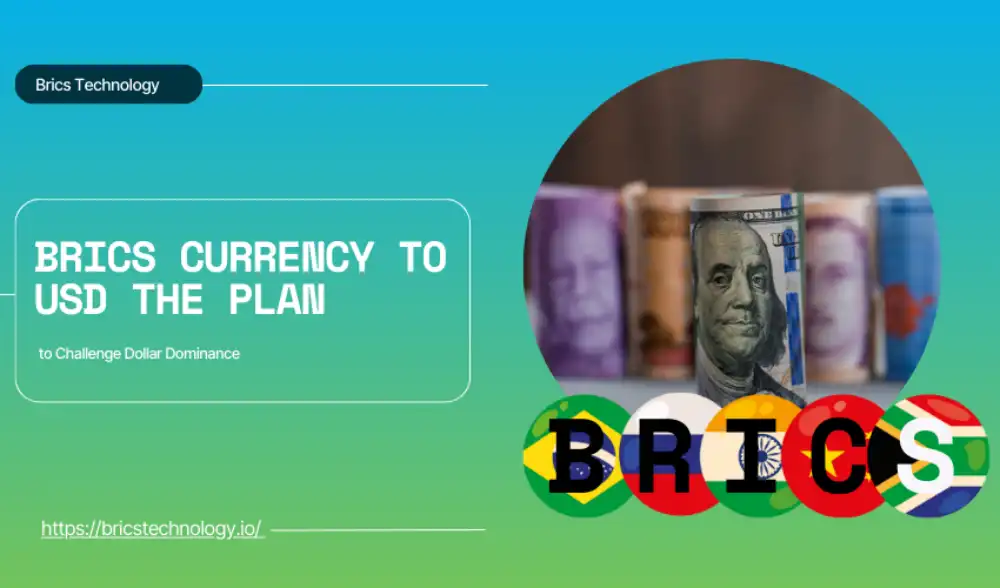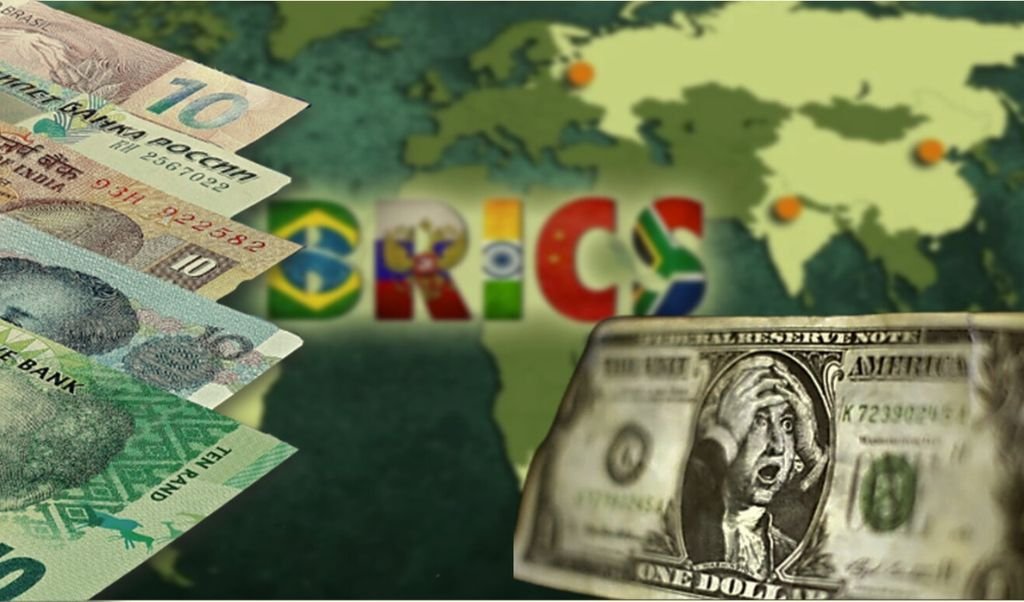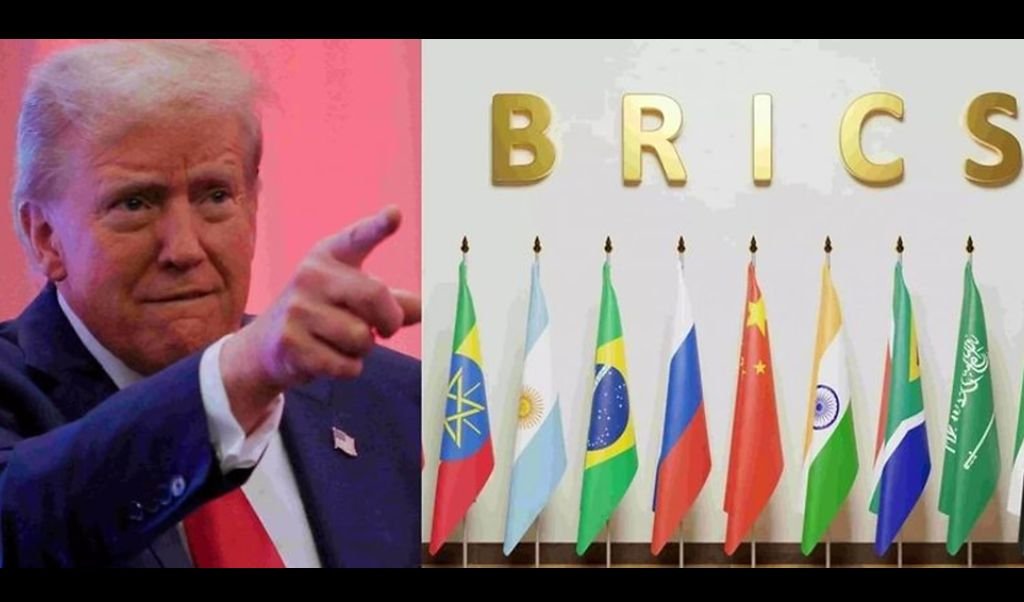BRICS Currency to USD: Can a New Currency Actually Replace the Dollar?

The global financial system has long revolved around the U.S. dollar, which is the main currency used in trade, investment, and international banking. However, a new push by a growing economic alliance could bring significant changes. BRICS, a group comprising Brazil, Russia, India, China, and South Africa, is working to reduce its reliance on the US dollar in global deals.
This idea is being shaped through a significant effort known as the BRICS Currency to USD. The bloc’s goal is not just to create a new form of payment but also to give countries more control over their financial systems. As more nations express interest in joining BRICS, the group’s influence is expanding fast.
Some experts believe this could shift how trade and reserves are handled worldwide. Others question whether it’s genuinely possible to challenge the dollar’s reach. Either way, the global conversation is shifting, and the U.S. needs to take notice.
What is the Proposed BRICS Currency?
The BRICS countries, Brazil, Russia, India, China, and South Africa, have proposed creating a unified currency or currency basket as an alternative to the U.S. dollar for international trade. Initially nicknamed the “Unit” or “R5” (representing the currencies Real, Ruble, Rupee, Renminbi, and Rand), this initiative aims to streamline cross-border payments, reduce exchange rate risks, and bypass reliance on Western-controlled payment systems, such as SWIFT.
BRICS Currency Name (“Unit” or “R5”)
The proposed BRICS currency, informally known as the “Unit” or “R5,” symbolizes the member countries’ commitment to unity in economic policy. It was first showcased at the 2024 Kazan Summit, capturing international attention by highlighting BRICS’ collective ambition.
How the Currency Basket Could Work
Under the basket approach, each country’s currency contributes proportionally based on its economic strength, stability, and trading volume. Unlike a single currency (such as the Euro), this basket system allows individual BRICS countries to maintain monetary autonomy while collaborating to build financial resilience against external economic shocks.
Why BRICS Wants to Move Away from the Dollar

The U.S. dollar has been dominating the world for decades. You name it:
- The global trade
- Oil transactions
- Foreign reserves
USDT has influenced everything and still influences everything. Countries across the world have relied on it. To break USDT’s dominance, BRICS nations have long discussed alternatives to the dollar, as seen in the original BRICS currency plan, which outlines their vision for a unified financial system.
This was necessary not only for stability but also because there was no viable alternative. The BRICS nations Brazil, Russia, India, China, and South Africa have long traded in dollars even when dealing with each other. But this historical dependence is now being challenged.
Tensions increased further when the U.S. imposed sanctions on countries. For example, the U.S. blocked Russia from using SWIFT, a global system that facilitates the transfer of money and messages between banks. This hurt Russia’s economy. Other BRICS countries watched closely. They worried that U.S. actions could hurt their economies in the future. So, they started new talks about staying independent and controlling their financial systems.
With rising concerns and mutual interest in USD-free trading, de-dollarisation began gaining ground. BRICS nations began signing bilateral agreements to trade in local currencies.
- China moved ahead with the digital yuan to reduce reliance on the U.S. dollar.
- Russia and India agreed to use local currencies instead of the dollar for energy trade.
These points indicate a shared frustration: too much U.S. control over global money movement.
The emerging narrative is that the BRICS vs. US dollar is more than a headline now. It is a growing movement aimed at reducing Western dominance in finance and creating a system that reflects a multipolar world.
BRICS Currency to USD: What is the Real Plan?
The BRICS alliance is actively developing a strategy to reduce its reliance on the U.S. dollar in international trade. This initiative aims to establish a more multipolar financial system, which the alliance believes will enhance and strengthen its economic independence.
A central component of this strategy is the development of a gold-backed digital currency, often called the “Unit.” A combination of gold reserves and local currencies from BRICS nations would underpin this proposed currency. Introducing such a currency could facilitate trade among member countries by reducing transaction costs and mitigating exchange rate volatility.
China and Russia are leading the push. Both nations have been vocal about the need to settle more trade in their currencies or through a unified BRICS dollar alternative. China uses its growing influence in Asia and Africa to conduct oil and commodity trades using the yuan. Russia, facing heavy sanctions, has been forced to rely on non-dollar trade channels. The idea is to use a BRICS-to-USD conversion only when necessary, eventually reducing its role in intra-BRICS trade.
Trump’s View on the BRICS Dollar and U.S. Economic Strength

As of 2025, U.S. President Donald Trump has taken a strong stance against the ongoing efforts by BRICS nations to reduce dependence on the U.S. dollar.
He warned that any serious move to replace the dollar in global trade could trigger aggressive U.S. retaliation. What did Trump say about BRICS at the start of his new presidency?
“We are going to require a commitment from these seemingly hostile Countries that they will neither create a new BRICS Currency, nor back any other Currency to replace the mighty U.S. Dollar, nor will they face 100% Tariffs.”
This position aligns with Trump’s broader agenda of economic nationalism. Since returning to office, he has pushed for tighter trade controls, greater monetary sovereignty, and stronger protectionist policies.
Meanwhile, BRICS continue to explore ways to trade using their local currencies. Although conversations about a shared currency are ongoing, no official launch or formal agreement has been made.
Trump’s administration will likely treat any progress as a strategic threat, potentially responding with harsh economic measures. The situation highlights growing global divisions over financial power and control in the post-dollar era.
Tariffs, Trade Wars, and the BRICS Response
The U.S. administration under Donald Trump recently reshaped the global trade landscape through aggressive tariffs. These trade barriers affected nearly every BRICS country directly or indirectly, especially China.
With more than 100% tariffs, China faced hundreds of billions of dollars in tariffs across various industries. While countries like India and Brazil saw increased scrutiny over steel, aluminum, and agricultural exports.
These tariffs did not just slow exports. They exposed a more profound vulnerability: how reliant the BRICS nations had become on a dollar-based trade system, primarily governed by U.S. interests. The uncertainty triggered by the trade war encouraged BRICS members to rethink how they conduct cross-border transactions.
That is where BRICS Pay, a proposed alternative payment system, started gaining traction. The goal is to facilitate trade in local currencies. If this idea is successful, these nations will no longer need to convert their national currencies to USD.
Many BRICS nations began forming regional deals and increasing trade in local currencies in response to trade restrictions. Russia and China deepened financial ties with non-Western partners. India started exploring new routes for oil and defence imports using its currency.
This collective shift is not just about escaping tariffs. It reflects a broader move to reduce dependence on the dollar-based financial system.
Russia’s Multicurrency Trading Initiative (BCBPI)
Russia, under heavy U.S. sanctions since 2022, has been leading the charge within BRICS toward alternatives to dollar-centric trading. The primary vehicle for this effort is the BRICS Cross-Border Payment Initiative (BCBPI), a multicurrency framework designed specifically for trade settlements among BRICS countries.
Unlike traditional dollar-based systems, the BCBPI allows member nations to trade directly in their national currencies: Rubles, Yuan, Rupees, Rand, and Reais. Each nation maintains currency accounts with partner central banks, allowing quick currency swaps and settlements without U.S. dollar intermediaries or Western banking systems like SWIFT.
Member Support and Adoption Status
Currently, Russia and China lead in adopting the BCBPI, successfully implementing transactions worth billions annually since late 2023. India has cautiously joined, prioritising trade stability, while Brazil and South Africa remain in discussions about broader participation.
Future Milestones
- Potential wider adoption by Brazil and South Africa in 2025–2026.
- Continuous expansion in bilateral trade settlements.
- Potential integration with BRICS Pay by 2027.
Global Momentum: 159 Countries Dropped the US Dollar?

The claim that 159 countries have dropped the US dollar is invalid. Russia has proposed a new payment system to more than 160 countries worldwide, including those in Asia, Africa, Latin America, and many developing countries.
But it is essential to approach this figure with nuance. While it is true that a significant number of nations are exploring alternatives to the dollar, the extent and nature of this shift vary considerably.
Reports suggest that approximately 159 countries have shown interest in or are adopting the BRICS payment system, called BRICS Pay, once it becomes available. This system aims to facilitate transactions in local currencies. It will reduce reliance on the US dollar and bypass traditional systems like SWIFT.
However, it is crucial to understand that “adopting” BRICS Pay does not mean completely abandoning the US dollar. Many of these countries continue to use the dollar for various transactions. Still, they seek to diversify their payment options to enhance financial sovereignty and mitigate risks associated with dollar dependency.
Global Reactions and Possible Countermeasures
The announcement of a potential BRICS currency has sparked mixed global reactions, notably from the U.S. and its allies. Former U.S. President Donald Trump openly threatened significant tariffs and economic repercussions if BRICS ever adopted a functional alternative currency.
Western nations, through institutions like the G7 and IMF, have been closely monitoring developments, prepared to counter any financial system that could disrupt existing monetary stability. Market analysts warn that premature moves by BRICS could trigger volatility and capital flight in member nations, undermining their own economies before affecting global dollar dominance.
For BRICS to truly challenge the USD, they must carefully navigate geopolitical risks, potential backlash, and coordinated Western responses, all of which complicate their path forward significantly.
What This Means for the Future of Reserve Currencies
The BRICS alliance, comprising Brazil, Russia, India, China, and South Africa, is actively exploring the creation of a unified currency to reduce its dependence on the U.S. dollar. This initiative aims to enhance financial sovereignty and facilitate trade among member countries.
Potential Implications:
- Diversification of Reserve Holdings: A BRICS currency could encourage countries to diversify their foreign exchange reserves, reducing reliance on the U.S. dollar.
- Shift in Global Trade Dynamics: A BRICS currency might alter international trade practices if widely adopted, with more transactions occurring outside the dollar-based system.
- Challenges to Implementation: Establishing a new reserve currency involves significant hurdles, including building trust, ensuring liquidity, and creating transparent monetary policies.
While the U.S. dollar accounts for approximately 58% of global foreign exchange reserves, introducing a BRICS currency could gradually influence this dominance, however, the transition would require substantial coordination and commitment among the BRICS nations.
How BRICS Plans May Affect the U.S. Economy and Investors
If BRICS launches a common currency, especially one backed by gold or other tangible assets, it could slowly shift global financial power. A gold-backed currency would offer value stability and attract countries wary of dollar-based inflation or U.S. monetary policies.
This move could reduce the global demand for dollars for the U.S. economy. As more countries begin trading oil, gas, and other goods in a different currency, the U.S. might see changes in how foreign countries hold reserve currency and settle payments, which could affect the dollar’s long-term strength.
American investors may feel both risk and opportunity in this shift. If the dollar weakens, imported goods may become more expensive, which could lead to higher inflation. At the same time, gold and commodities could gain value, which could draw investors to those sectors.
Here is what U.S. investors might consider:
- Watch for shifts in global trade policies and currency reserves.
- Hedge against dollar decline through gold or emerging market investments.
- Follow BRICS developments closely, especially those related to energy and tech deals.
The U.S. dollar is likely to remain dominant in the short term, but the BRICS dollar can also be a strong competitor in the long run. We will have to wait and see how it goes.
Recommended: BRICS Summit 2025
BRICS Pay: A New Cross-Border Payments System
The BRICS countries understand a critical reality: currency integration starts with payment systems. At the centre of this initiative is BRICS Pay, a decentralised messaging platform designed specifically for cross-border financial transactions within BRICS nations.
Goals and Functionality
BRICS Pay aims to provide an alternative to SWIFT, the Western-controlled payment network. The system allows businesses and banks to exchange payment instructions directly, using national currencies rather than relying on the dollar. The ultimate objective? Reducing transaction costs, enhancing efficiency, and increasing financial sovereignty.
Current Status of BRICS Pay
Pilot programs between Russia and China are actively running, showcasing initial success in bilateral trade. However, full-scale integration across all five BRICS countries—Brazil, Russia, India, China, and South Africa—remains limited. Further integration will depend heavily on political agreements, regulatory alignment, and technological readiness.
What’s Next?
- Expanded bilateral tests expected in 2025–2026.
- Formal evaluation set for the 2026 BRICS summit.
- Full-scale adoption realistically achievable post-2027.
Final Thoughts
The global financial map may be shifting. As BRICS pushes forward with its idea of a shared currency, the world is watching closely. The goal is clear: to reduce dependence on the U.S. dollar and build a stronger voice in international trade.
Each BRICS member brings unique strengths in oil production, economic size, or regional influence. Together, they are beginning to challenge long-standing systems.
The BRICS Currency to USD debate is not just about numbers. It is about power, control, and the future of global finance. If a new currency is launched, especially one backed by gold, it could attract support from many nations seeking alternatives. Investors in the U.S. and worldwide are now weighing the implications of this shift for markets, inflation, and long-term investments.
Still, the road ahead is not simple. Political differences within BRICS, questions around trust, and technical hurdles will test how far this plan can go. And for now, the BRICS currency prices and similar ones remain uncertain, both in theory and practice.
Want to know how BRICS could challenge the U.S. dollar? Stay updated, subscribe now, and join the conversation! Also, check out which new countries are joining BRICS in 2025?
Frequently Asked Questions
It refers to the exchange relationship between the new BRICS currency and the U.S. dollar. The goal is to make trade easier among member countries without relying heavily on the dollar.
They want more control over their economies. Using the dollar makes them vulnerable to U.S. interest rate hikes and sanctions, so many are exploring other options.
If more global trade shifts to the BRICS payment systems, the dollar’s power might be reduced. This could affect U.S. borrowing costs, international influence, and everyday prices.
There is an ongoing debate. Some leaders have hinted at a gold-backed model to add trust and value. But nothing official has been confirmed yet.
There is no official BRICS currency price because it has not yet been launched.
Catagories
Recent Post
- Tired of Disconnected Systems? How Cloud Telephony + CRM Improves Efficiency
- Stealthly AI: Transforming AI Content into Authentic Human Text
- Why Weighted Grade Calculators Matter for Accurate Academic Planning
- Customize Your Phone Sound with a Free Online Ringtone Maker
- How to Use AI in Stock Trading for Smarter Decisions
